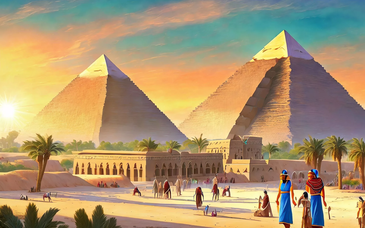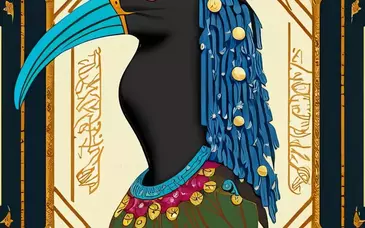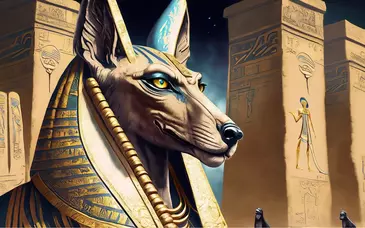Although we know a great deal about Akhenaten compared to some of the other Pharaohs, there are still some major mysteries concerning his reign. Various 'experts' have differing theories concerning this enigmatic ruler. On this page I will detail some of the various theories which have been presented, along with their relative pros and cons.

Akhenaten's strange appearance
Statues of Akhenaten in the so called Amarna style show the Pharaoh as a gaunt figure with a narrow chest and wide hips. The following reasons for this have been given
Akhenaten was a woman?
One interpretation of Akhenaten's strange physique was that 'he' was actually 'she'
Deformed by Disease?
It has been suggested that Akhenaten suffered from Frohlich's Syndrome. This may explain his strange appearance, but one side effect of that disease is impotence. Akhenaten is reported to have had six daughters by Nefertiti alone which makes this explanation unlikely, although it is possible that the disease struck in later life
This was a new style of Art?
The artistic styles of the Amarna period has no comparison to any other period in Ancient Egypt. For the first time royalty were shown in more natural, less formal poses. In addition the freakish statues at Karnak could have been deliberately exaggerated to set the kings appearance apart from 'mortal' men
Akhenaten's Monotheism
Was Akhenaten Moses?
When study of Akhenaten's life became more popular in the late 18th century many attempts were made to equate the Pharaoh with the biblical Moses. It has also been suggested that Moses was actually a High official in the court of Amenhotep III

Religious visionary?
Atenism can be interpreted as the first step in a logical evolution of religion from many minor gods to one major one. If this is the case then Akhenaten could well be viewed as the forefather of most modern beliefs.
Political opportunist?
When Akhenaten ascended to the throne the priests of Amun controlled much of Egypt. The temples were wealthy and powerful and Akhenaten may have seen their destruction as the way to further his own ambitions. Effectively in Atenism the Pharaoh was the only person who could make offerings directly to the God, which would have given him power as both religious and political leader.
Or just a loony
One other possible explanation was that Akhenaten was mad. In many of the Aten texts the god is addressed as 'Father', and it is possible that Akhenaten actually believed the sun disk to be the physical incarnation of Amenhotep III.

Akhenaten's lack of foreign campaigns
Much is made of Akhenaten's lack of action in outlying areas of the Egyptian Empire. Much of this blame arises from the so called Amarna Letters, diplomatic correspondence from outlying governors to the Pharaoh. The evidence of these every day communications should, however, be taken in context. They provide a 'warts and all' look at diplomacy in the age unlike the glorifying tomb writings of other periods. The basic theories about this are as follows. It is likely that Akhenaten's control over the outlying stated was so solid that no major intervention was required. Interestingly there is no evidence that any of the cities pleading for help in the Amarna Letters were lost to Egyptian control at that time.
Did he allow Egyptian influence to crumble?
There is a lack of evidence of any foreign campaigns during the reign of Akhenaten. It has been suggested that the king was so involved with his new religion, and his new city, that much needed resources were diverted from the rest of the empire.
Has he been misrepresented?
The artistic style of the Amarna period differed from earlier styles in that the images were much more lifelike, and conquest played a smaller part. Images of the Pharaoh Smiting Asiatics would not have been in the spirit of Atenism. Akhenaten may have wished to be remembered as a family man rather than a warrior. Interestingly a block from the Aten temple used as filling in a pylon at Karnak contains the unusual image of Queen Nefertiti 'smiting' unfortunate foes.
Did he know what was happening?
Akhenaten may not have been fully aware of the situation. The priests of the old temples may have deliberately withheld information from him to try to weaken his rule to an extent where the old order could be re-established

What happened after his death?
There is also uncertainty about events after Akhenaten's death. Evidence indicates that he was originally interred in the royal tomb at Akhetaten, along with his daughter Meritaten, and that he was later moved (by Tutankhamun?) to another location, probably the Valley of the Kings. It is possible that after his original burial the Mummy was moved to tomb KV55 in the Valley of the Kings to protect it from the anti-Atenist backlash. It is also possible that his tomb in the Valley of the Kings is yet to be discovered.
What happened to the Mummy
Akhenaten's mummy has never been positively identified. The most likely candidate was thought to be the mummy found in the tomb KV55 in the Valley of the Kings but it is very unlikely that this body is Akhenaten's. Research has shown it to be that of a young man. It is more likely that this body is of Smenkhkare. A piece of gold foil bearing Smenkhkare's cartouche, stolen when the tomb was opened, has recently surfaced in Germany which would seem to confirm the identity of the occupant.
The burial seems to have been hastily arranged using a coffin originally intended for a woman. The length of Smenkhkare's reign probably means that there was little time to make arrangements.



